What is a mountain bike tyre?
A mountain bike tyre is the main point of contact between your bike, and the trail. It needs to maintain traction with all sorts of different terrains, while preserving speed when you want it, and reducing it when you don’t, all while not getting a puncture! It is because they are so important, and have to deal with all of the many different requirements that the selection is so big (and confusing).
We have written the following guide to try and explain in detail exactly what everything means, and hopefully set you up to make an informed choice of what suits your individual needs the best.
Understanding the different parts of a mountain bike tyre
When faced with all the technical names, and descriptions of all the tyres available, it can be difficult to know what to look for, or understand what makes one tyre different from another.
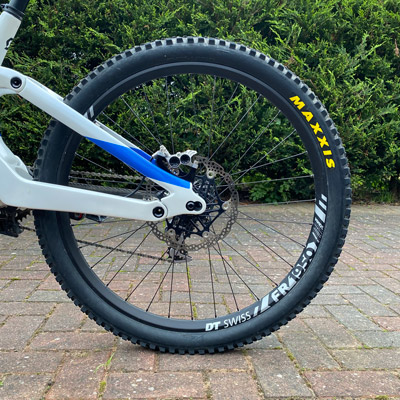
Wheel Size
Wheel size is an easy one, it’s the size of the wheel that you have. You can’t choose from a range here, it either fits or it doesn’t. Use the existing tyre that came on the bike to determine what size wheels you have, or check the manufacturer specification. Chances are it’s one of the following sizes anyway:
- 24" - Found on some childrens bikes and some older dirt jump mountain bikes.
- 26" - Found on generally older mountain bikes, and the majority of dirt jump bikes.
- 27.5” / 650b - Still a very common size, found on a wide range of mountain bikes.
- 29” - The most popular choice on modern bikes, from cross country right through to downhill bikes.
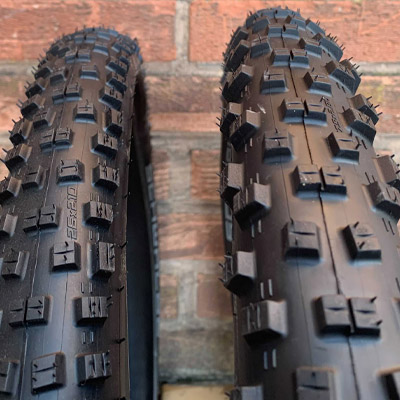
Width
With tyre width, you get a bit more choice, depending on the space you have available in your frame or forks, and also the width of the rim that the tyre will be fitted too. As a general rule of thumb without getting too technical, have a look at the tyre that came on the bike, and don’t deviate more than about 20% either way from that. If you need some assistance with whether a tyre will fit a certain rim or frame then reach out to us, as we have lots of experience in this area.
The width you choose (as long as it will fit) will come down to personal preference. If you like a more agile, lighter, faster rolling ride, then opt for a thinner width, or if you want more stability, plushness and more small bump absorption then go for a wider option.
In modern, normal mountain bikes you would find 2.2 - 2.3” at the thinner end of the spectrum and 2.6” - 2.8” at the wider end.
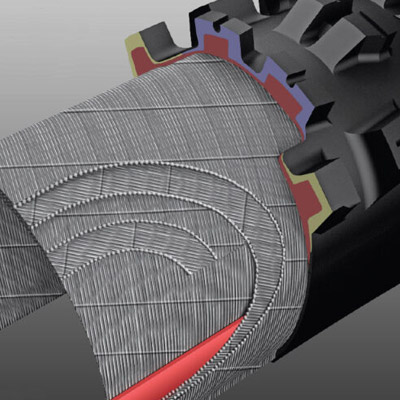
Casing and construction
The casing of the tyre (or carcass) is the main construction of the whole tyre, including the sides (sidewalls), under the top tread, and the bead that fits the tyre to the wheel rim.
The job of the casing is to fit to the wheel, and prevent punctures in the form of thicker material or protection technologies built into the casing itself. The majority of tyre manufacturers will make a model with various different casings, so you can choose the best one to suit your needs, which generally revolves around the sort of trails you normally ride.
If you ride smoother, less aggressive trails for the majority of the time, then you may well be better suited with a lighter casing with less protection, but if you do a lot of rocky, rooty, aggressive riding then you might want something more heavy duty, at the cost of some extra weight. If you’re unsure, choose something in the middle! Maxxis tyres are well known for their intermediate EXO casing across a lot of their range.
The bead of the tyre is normally rigid steel, or a folding bead. Folding beads are lighter, and better at being set up as tubeless, but are more expensive than rigid steel beads.
You can read up about the different technologies used in tyre casings, and which ones are available in a range, on the individual product pages themselves.
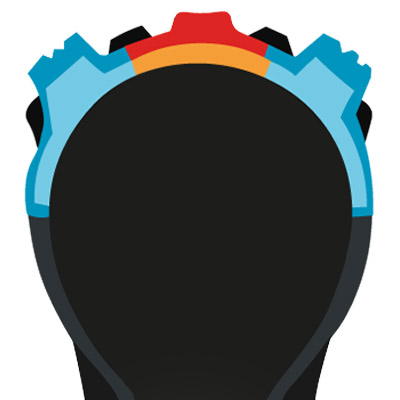
Compounds
The compound is quite simple to understand, and is essentially the rubber mix that is used to create the tread pattern. A softer compound can mould better into the ground, providing better grip, at the cost of a reduction in rolling speed, and durability. A harder compound lasts longer, rolls faster (including making pedalling easier), but has less surface grip.
The majority of tyres are best suited with something intermediate to give the best of both worlds, or a mix of hard in the centre, and soft on the outside (for cornering grip). For downhill mountain biking where gravity is on your side, people tend to want softer as they don’t need to worry about maintaining speed, and for cross country racers they would want something much harder for where pedalling efficiency and rolling speed are vital.
Vittoria mountain bike tyres use a special compound called 4C Graphene with four different grades of rubber to try and get you all the right grip in all the right places.
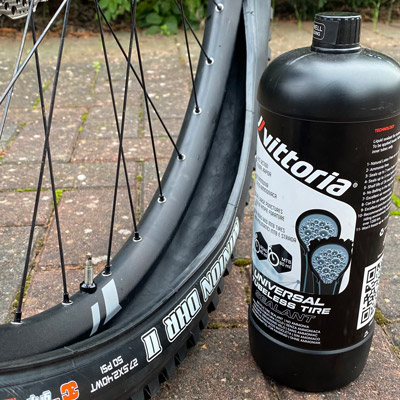
Tubeless
For many years, all bicycle tyres had inner tubes inside of them, which are rubber tubes that hold all the air. In the last 5-10 years tubeless tyres have been developed which do away with the inner tube, and runs puncture sealing ‘sealant’ in its place. This allows some punctures to be sealed automatically during a ride, and also saves weight, and allows for lower pressures to be run in the tyre, which in turn provides more grip and traction.
If your wheel rims are ‘tubeless ready’, then you can run a tubeless tyre. Always check that the tyre you want is tubeless compatible, because some still aren’t. Any ‘tubeless ready’ tyre can still run inner tubes, so you get the best of both worlds.
Running tubeless does add extra complication with compatibility, cost, and the mess of dealing with sealant, so some people still opt to use inner tubes instead.
Which tread pattern is best for me?
The tread of the tyre is the most important part, and also the one that can be the most confusing to choose. The tread is the arrangement of knobs, lumps and bumps on the outside of the tyre that is always in contact with the ground. The pattern and layout of the tread can have different effects on how the bike behaves on different types of terrain.
A wider, spaced out tread pattern will leave good amounts of space between the knobs which will allow mud to disperse off the tyre and not get stuck in the tread. These types of tyres tend to have longer knobs, and are best suited for muddy sloppy conditions. An example of a mud tyre is the Michelin Mud Enduro Tyre
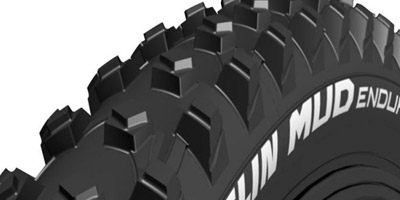
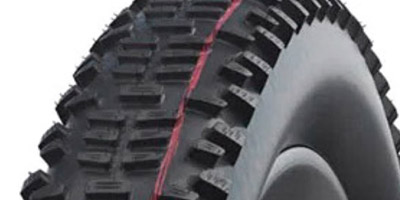
A narrower, lower profile tread pattern will have more rubber in contact with the ground, for better grip, and also less movement and ‘waviness’ that you would get with longer knobs. This lends to a faster rolling tyre suited for hardpack, or dry trails. The Schwalbe Racing Ralph is a prime example of this kind of tyre.
Most tyre treads try to strike a balance between the two of these extremes, whether that’s with wide outside knobs for cornering grip, and lower profile centre knobs for straight line speed, or through other means. A popular tyre for use in all conditions is the Maxxis Minion DHR II which comes in a wide range of sizes and variations.
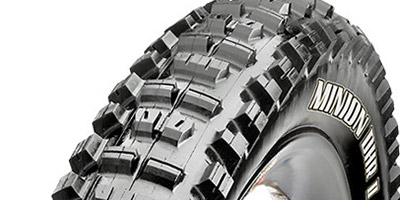
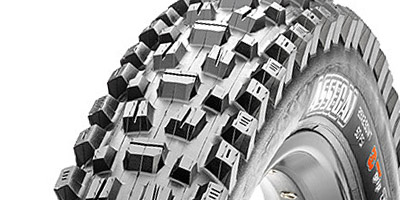
Some tyre treads incorporate ‘directional’ knobs, which are angled to deflect the tyre through any harsh obstacles or roots. These are more often found on tyres tailored towards being on the front, where all the steering happens, with rear specific tyres tending to have more square edges for better braking power. There is not normally fixed distinction between front and rear tyres though, and people tend to run whatever suits their riding the best. A prime example is the Maxxis Assegai tyre which can be run front or back, but also benefits from directional tread.
Downhill, and aggressive enduro tyres tend to have larger knobs than cross country or normal trail tyres, as gravity can compensate for the reduction in rolling speed.
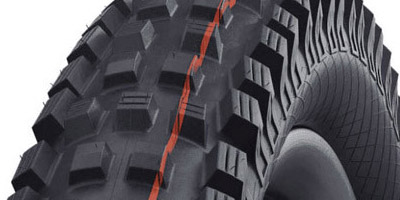
Tyre pressures explained
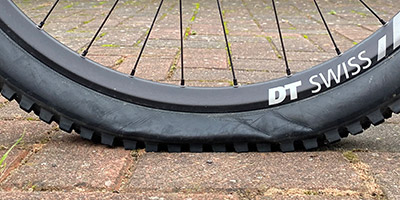
Tyre pressure is always down to personal preference, some people like a harder, faster tyre, which will reduce traction to some extent, and some people prefer a softer, grippier tyre, at the cost of slower rolling speed, and possibly more punctures.
The ideal way to handle tyre pressures is to get into the habit of changing tyre pressure depending on conditions, if it’s dry, run them harder, if it’s wet and you want the extra grip, go a touch softer.
Another great tip is to run the front (where the steering is) softer, for extra grip, and the back harder, for getting the speed up and reducing the chance of punctures.
Tyre Inserts
Tyre inserts are a relatively new development, and are becoming more and more popular. They are put inside the tyre , and fill some of the volume so that if you get a flat and lose all pressure, you can still finish your ride, or race run. A bit of a tricky item to fit (plenty of videos around to help with this), and fairly expensive, but once in might be the decider between a terrible day, or a great one!
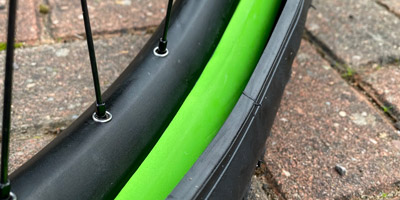
When to replace a mountain bike tyre?
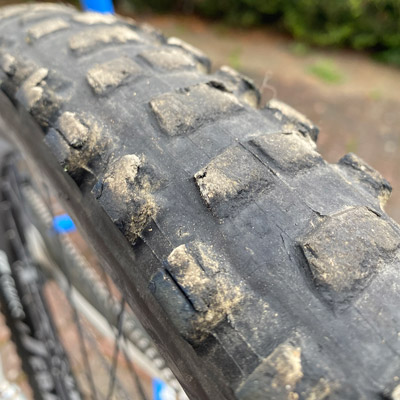
You might be wondering if your tyre even needs replacing. It’s possible that it’s still just fine to keep riding on. The best practice is to visually inspect your tyres every ride. If there are any tears, bulges, cuts or rips in the casing or the tread, even if they don’t go all the way through then it’s best to buy a new one.
If the tread is crumbling, worn down, or there is knobs missing then it may also be time to get a fresh one on there. Other than that, it should be fine to keep on riding, even if theres some discolouration.
If you’re at all unsure, we would recommend either sending us some photos, or getting a fresh tyre. Safety should always be the number one priority.
Make sure that your sealant isn’t much older than 6 months or that may have dried up too!